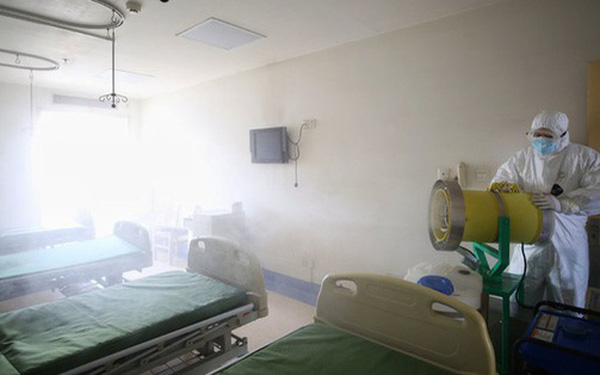Chinese research: Detecting SARS-CoV-2 in the air at Wuhan hospitals
- Tram Ho
According to The New York Times (NYT-USA), Chinese scientists recently found genetic markers of viruses in airborne droplets, many of which are smaller than 1 / 10,000 in diameter. inch, providing additional evidence that SARS-CoV-2 can spread through the air.
This has previously been demonstrated in a laboratory, but now the Chinese team has been conducting research in real-world terms. At two hospitals in Wuhan, they collected tiny droplets of a virus containing genetic markers in the air.

The results of their study were published in the scientific journal Nature on April 27.
It is unclear, however, whether the viruses in the samples they collected were contagious, but tiny droplets created through breathing and talking could float in the air and be inhaled by others.
” Those drops will stay in the air for at least two hours, ” said Linsey Marr, professor of environmental and civil engineering at Virginia Tech University. ” This strongly proves that [SARS-CoV-2] is likely to spread in the air .”
Marr and other scientists say there is growing evidence that SARS-CoV-2 can be spread by droplets. Meanwhile, the World Health Organization has always said that the disease is mainly spread through large droplets, does not survive in the air for too long or due to contact with the surface containing the virus.
However, the new findings by Chinese scientists have not fully solved the problem: Although the SARS-CoV-2 RNA exists in droplets, they have not been able to confirm that the virus is still infectious. Whether or not these are just pieces of virus harmless.
” This is a copy of a living virus ,” asked Harvey V. Finber, head of the Standing Committee on Emerging Infectious Diseases and 21st Century Health Threats, the American Academy of Sciences questioned. . ” Can you grow this virus in the air? ”
In February and March, scientists collected samples at the People’s University Hospital of Wuhan University and a square cabin hospital, used to isolate and treat patients with mild Covid-19 infection. . They also sampled air in public areas of Wuhan, including an apartment building, a supermarket, and two shops.
In the air of isolated rooms or rooms of hospitals, with good ventilation, very few viruses have been detected. However, in non-ventilated areas such as toilets, the virus density is very high.
Professor Mar said: ” To an extent, this emphasizes the importance of avoiding tight, confined spaces .”
The researchers also detected the presence of viruses in the air – where employees removed protective clothing, suggesting that the virus attached to clothing could be pushed back into the air. After more stringent cleaning procedures were performed in the hospital, the virus density was significantly reduced.
The data from Wuhan is similar to the findings of the University of Nebraska Medical Center, where researchers also discovered SARS-CoV-2 RNA in the air and on the room surface. The study, still in the pre-publishing evaluation phase, did not determine the size of the droplets. However, viral RNA appears on many surfaces, such as under a bed and on a window sill, showing small droplets of air hovering around the rooms.
Researchers in Nebraska cannot confirm whether the virus is infectious.
In the study in Wuhan, the virus was not detected in most public places, including apartment buildings and supermarkets, but a certain level of the virus was detected in crowded areas outside one of hospitals and shops. Professor Marr said she calculated that it takes about 15 minutes for a person to inhale a virus particle.
” It is interesting that the numbers are measurable ,” she said. ” I think this adds good evidence of staying away from crowds .”
Source : Genk
